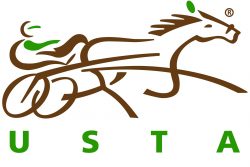USTA Opposes Horseracing Integrity and Safety Act of 2020 (HISA)
September 11, 2020,Columbus, OH – The newly introduced Horseracing Integrity and Safety Act of 2020 (HISA) is, like its predecessors, a Thoroughbred bill written by elite Thoroughbred interests in an attempt to address elite Thoroughbred problems. Indeed, Senate Majority Leader McConnell’s bill did not include Standardbreds or other breeds, and the press release that announced the bill repeatedly cited only Thoroughbred racing and its interests.
 The bill has since been bastardized by an array of outside interests, and harness racing again has been pulled into the mix. A review of the revised language reveals that the bill now is a virtual clone of H.R. 1754 (Horseracing Integrity Act of 2019), and will harm, not help, Standardbred horses and the harness racing industry.
The bill has since been bastardized by an array of outside interests, and harness racing again has been pulled into the mix. A review of the revised language reveals that the bill now is a virtual clone of H.R. 1754 (Horseracing Integrity Act of 2019), and will harm, not help, Standardbred horses and the harness racing industry.
While the United States Trotting Association (USTA) strongly supports state-regulated, breed-specific, uniform medication rules for horse racing, the USTA strongly opposes the HISA for a number of reasons and sees several areas of significant concern to the Standardbred racing industry.
Lasix (Furosemide)
The legislation seeks to ban the race-day use of Lasix, a universally-accepted therapeutic medication. Veterinarians endorse Lasix as the only known treatment for Exercise Induced Pulmonary Hemorrhage (EIPH), a condition that causes varying amounts of bleeding in the lungs of racehorses as well as horses in the wild. Both the American Association of Equine Practitioners and the North American Association of Racetrack Veterinarians support the use of Lasix and oppose this legislation.
Proponents of the ban on the use of Lasix have purposely disseminated misleading information on the percentage of horses that suffer EIPH when they say that only five percent of horses “bleed” during racing. That statistic is the percentage of horses that suffer epistaxis, the most severe form of EIPH involving patent hemorrhaging from the nose. In fact, about 90 percent of horses bleed into their lungs during racing, with each bout of EIPH causing irreparable damage to lung tissue.
Lasix is not performance enhancing and, due to the very sensitive capabilities of testing, it cannot be used to mask illegal medications.
Unspecified Funding Mechanism with Extremely Inequitable Costs to Harness Racing
Various proponents of this legislation have indicated that a newly created, private Horse Racing Anti-Doping and Medication Control Authority would be funded by a surcharge to the owners and trainers of every horse in every race.
Standardbreds are a different breed with a significantly different racing performance model than Thoroughbreds. Since the average Standardbred races 19 times per year while the average Thoroughbred only six, that fee structure would result in three times the cost to Standardbreds compared to Thoroughbreds.
This newly created regulatory body will have to impose additional fees and costs on the industry with no oversight mechanism in place. Harness racing horsemen will be hit particularly hard because most of them are working-class people. It will drive many of them out of the business.
Testing and Oversight
The bill mandates a drug-testing authority that has no background in animal testing. The testing authority will be done by a private business – USADA – which tests certain human athletes.
Nowhere in the bill is there mandated ANY consultation requirement with the National Veterinary Service Labs for drug testing or the USDA Veterinary Services.
The bill snatches legitimate authority away from the states, forcing them to cooperate, and illegally delegates Congressional authority to a private company that is accountable to no elected official.
The USTA promotes and insists upon the humane and ethical treatment of its horses. Despite its inaccurate title indicating that it will make horses safer, this bill does the opposite. Whether it is right for Thoroughbred racing – its intended target – is not our concern. It most certainly is wrong for harness racing, will harm our industry, and put our horses and participants at risk.
